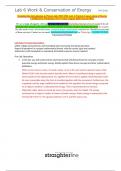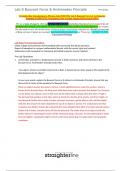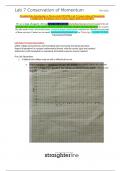Exam (elaborations)
Straighterline Introduction to Physics (lab) PHY250L Lab 6 Work & Conservation of Energy COMPLETE Worksheet (New Version August 2024) Scored 100%
- Course
- PHY25OL
- Institution
- Straighterline
Straighterline Introduction to Physics (lab) PHY250L Lab 6 Work & Conservation of Energy COMPLETE Worksheet (New Version August 2024) Scored 100%
[Show more]








